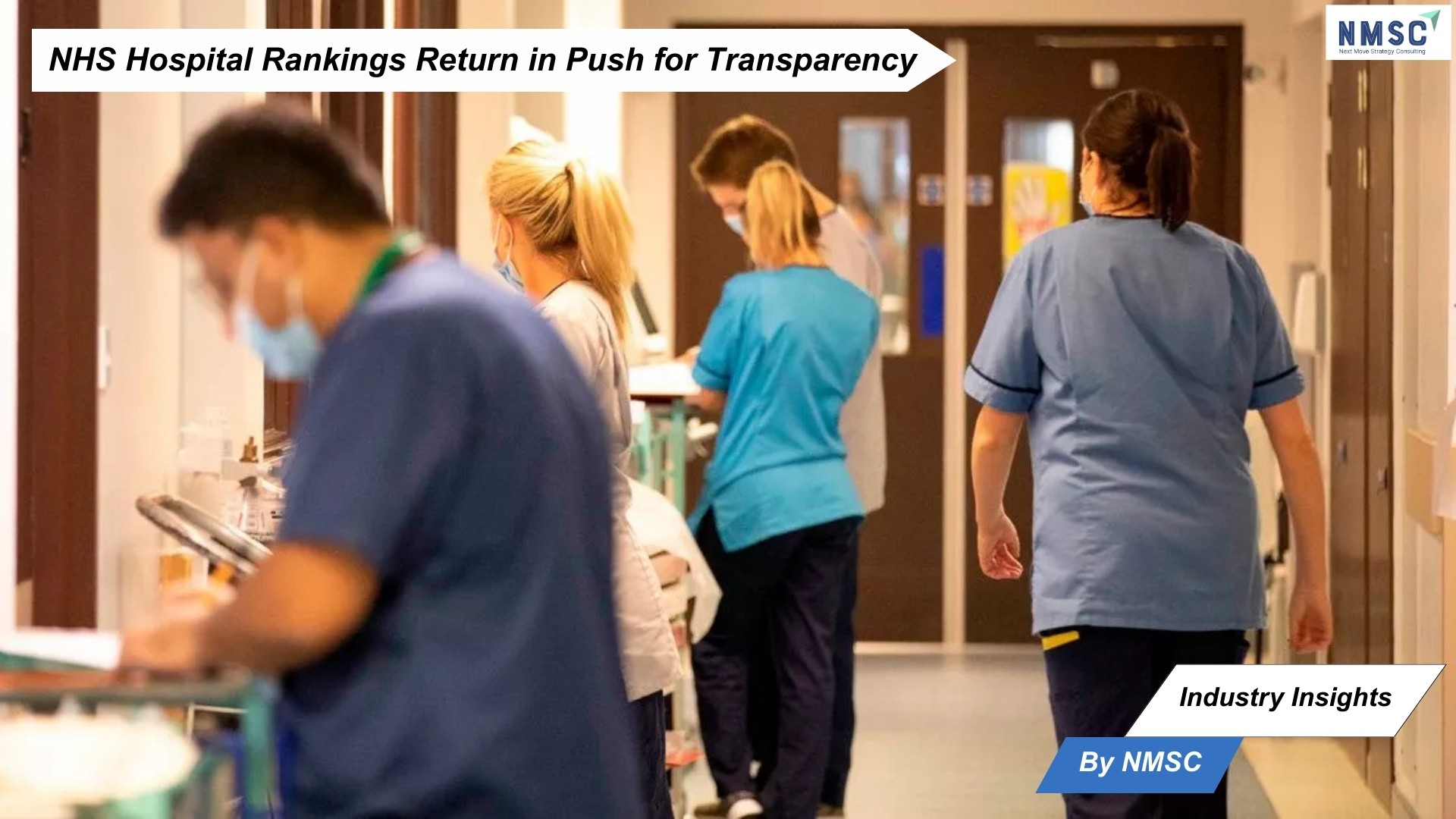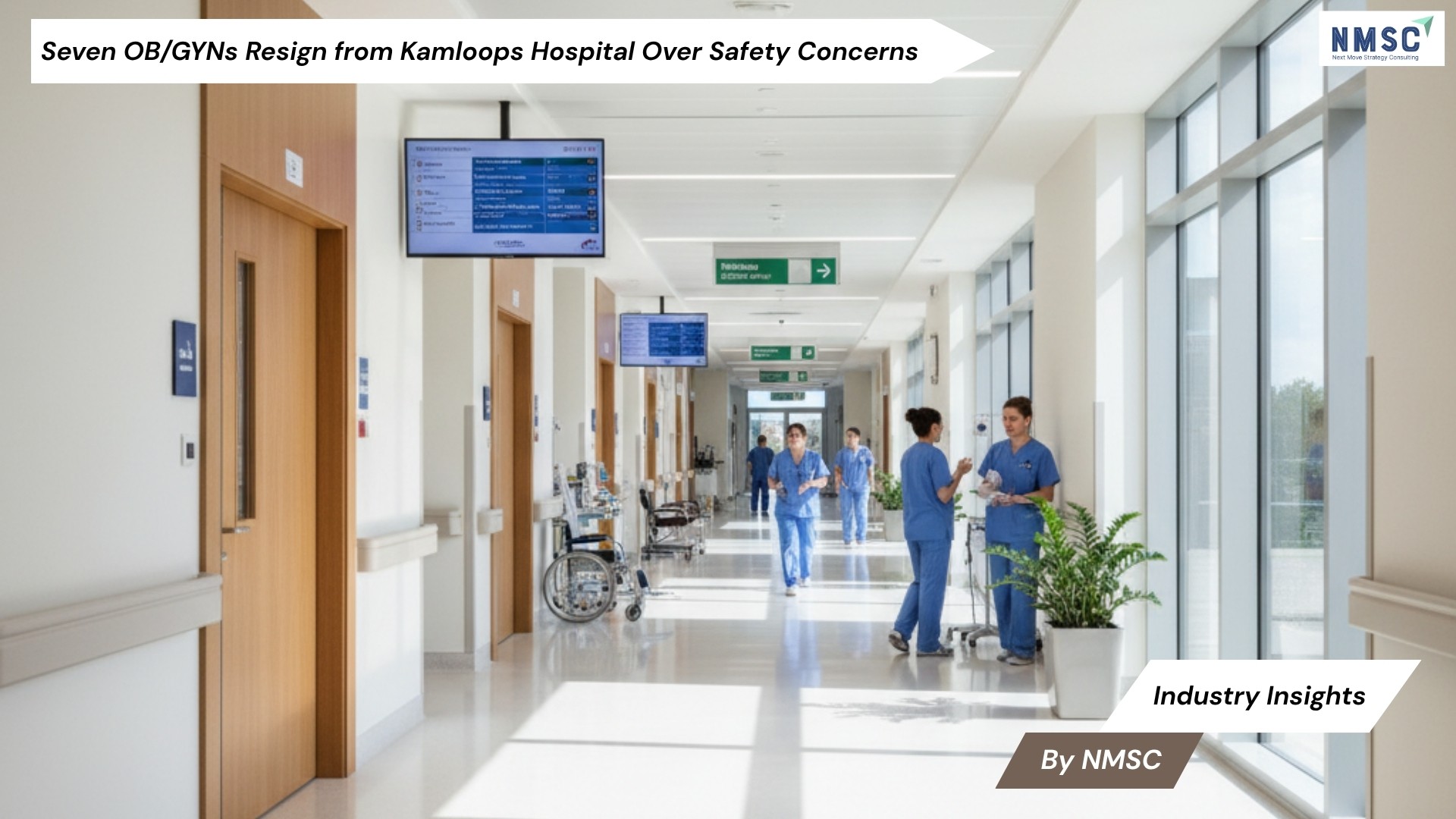NHS Hospital Rankings Return in Push for Transparency
Published: 2025-09-09

Insights from Next Move Strategy Consulting
In a decisive policy shift, Labour has reintroduced football-style league tables ranking hospitals in England, marking the first such publication since the early 2000s.
A New Era of NHS Accountability
The rankings, covering all 205 NHS trusts across acute, mental health, community, and ambulance care, place Moorfields specialist eye hospital in London at the top, while Queen Elizabeth hospital in King’s Lynn, Norfolk, ranks lowest. Health secretary Wes Streeting framed the initiative as essential to eliminating the “postcode lottery” in care.
“We must be honest about the state of the NHS to fix it,” Streeting stated. “Patients and taxpayers have to know how their local NHS services are doing compared to the rest of the country.”
The tables are based on 30 metrics, including A&E wait times, elective treatment delays, financial performance, and patient experience. Updated quarterly, they aim to provide both transparency and accountability in service delivery.
Balancing Recognition with Risk
Specialist trusts dominate the top tier, including Moorfields, the Royal National Orthopaedic Hospital, Christie cancer hospital, and Liverpool Heart and Chest Hospital. Northumbria was the highest-performing general acute hospital, ranking ninth overall.
Despite these results, analysts express reservations. Thea Stein, chief executive of the Nuffield Trust, argued that using financial data in performance rankings limits their practical value for patients. She warned the scheme might discourage patients from using, or staff from joining, lower-rated trusts.
Similarly, Danielle Jefferies of the King’s Fund noted that hospital performance cannot be captured in a single label. She highlighted that a trust could excel in one area, such as A&E wait times, while falling short in others, such as elective or cancer care.
Political Stakes and Strategic Outlook
The Department of Health and Social Care emphasized that the rankings are not about “naming and shaming” but about driving up standards and identifying where support is most needed.
Labour’s decision to revive the model—first introduced under Tony Blair’s government in 2000 and scrapped in 2010—comes amid declining public satisfaction with the NHS. The move also carries political implications, with warnings from the Independent Commission on Neighbourhoods that Labour risks losing ground to Reform UK unless it delivers improvements, particularly in deprived areas.
Perspective: Implications for the Hospital Market
The reintroduction of NHS hospital league tables marks more than a policy change; it is likely to reshape competitive dynamics across the hospital sector in the UK. By making comparative performance data transparent and widely accessible, the initiative creates both opportunities and risks for providers, investors, and policymakers.
Market Competition and Reputation Management
Hospitals now face heightened reputational risk as performance is ranked publicly every quarter. Specialist trusts that consistently secure top positions—such as Moorfields or Christie—are likely to gain stronger brand recognition, attracting patients, staff, and potentially philanthropic or private sector partnerships. Conversely, lower-ranked trusts may experience reputational challenges, which could influence patient confidence and staff retention.
Investment and Funding Priorities
High-performing hospitals may be granted more operational freedoms, while underperforming trusts will receive enhanced support. This creates a differentiated funding and oversight environment, directing capital and managerial resources where they are most needed. For the hospital market, this means a more stratified allocation of resources, potentially accelerating consolidation or service integration in weaker trusts.
Workforce and Talent Flows
Staff recruitment and retention are central to hospital performance. Public rankings could intensify labour market pressures, with clinicians preferring to work in higher-ranked organisations. This may exacerbate staffing challenges in already struggling hospitals, creating disparities in workforce distribution and further widening performance gaps unless targeted interventions are introduced.
Technology and Performance Improvement
To improve or protect their ranking, hospitals are expected to adopt more digital solutions, process innovations, and patient experience enhancements. Metrics such as A&E waiting times and elective treatment delays incentivise investment in digital triage, electronic health records, and predictive analytics. This could accelerate the digital transformation of the NHS hospital market, with vendors of healthcare IT and process-automation technologies benefiting from increased demand.
Political and Policy Ramifications
Because the rankings carry significant political visibility, hospitals are under greater pressure to demonstrate measurable improvements. In deprived regions, where outcomes lag and dissatisfaction fuels political risk, there may be increased policy-driven funding to improve performance. This could lead to targeted market expansion in underserved areas, with opportunities for partnerships, infrastructure development, and public-private collaborations.
Long-Term Market Impact
In the medium to long term, the quarterly visibility of results is likely to:
-
Push hospitals toward greater operational efficiency and accountability.
-
Encourage patient choice and mobility, even within the constraints of the NHS system.
-
Stimulate a competitive ecosystem in which reputation and outcomes drive investment, talent, and innovation.
Conclusion
For the hospital market, the return of NHS league tables introduces a new layer of performance-driven competition. While it offers opportunities for high performers to strengthen their market position, it also risks deepening disparities among trusts. The greatest long-term impact will likely be on resource allocation, workforce distribution, and adoption of innovative care models, as providers adapt to the pressures of transparent, publicly benchmarked accountability.
Source: The Guardian
Prepared by: Next Move Strategy Consulting
About the Author
 Pritish Braman is a Digital Marketing Executive with over a year of experience, specializing in content writing and online engagement. He enjoys creating clear, impactful content that connects with readers while also applying marketing strategies to reach wider audiences.
Pritish Braman is a Digital Marketing Executive with over a year of experience, specializing in content writing and online engagement. He enjoys creating clear, impactful content that connects with readers while also applying marketing strategies to reach wider audiences.
About the Reviewer
 Sanyukta Deb is a seasoned Content Writer and Team Leader in Digital Marketing, known for her expertise in crafting online visibility strategies and navigating the dynamic digital landscape. With a flair for developing data-driven campaigns and producing compelling, audience-focused content, she helps brands elevate their presence and deepen user engagement. Beyond her professional endeavors, Sanyukta finds inspiration in creative projects and design pursuits.
Sanyukta Deb is a seasoned Content Writer and Team Leader in Digital Marketing, known for her expertise in crafting online visibility strategies and navigating the dynamic digital landscape. With a flair for developing data-driven campaigns and producing compelling, audience-focused content, she helps brands elevate their presence and deepen user engagement. Beyond her professional endeavors, Sanyukta finds inspiration in creative projects and design pursuits.
















Add Comment